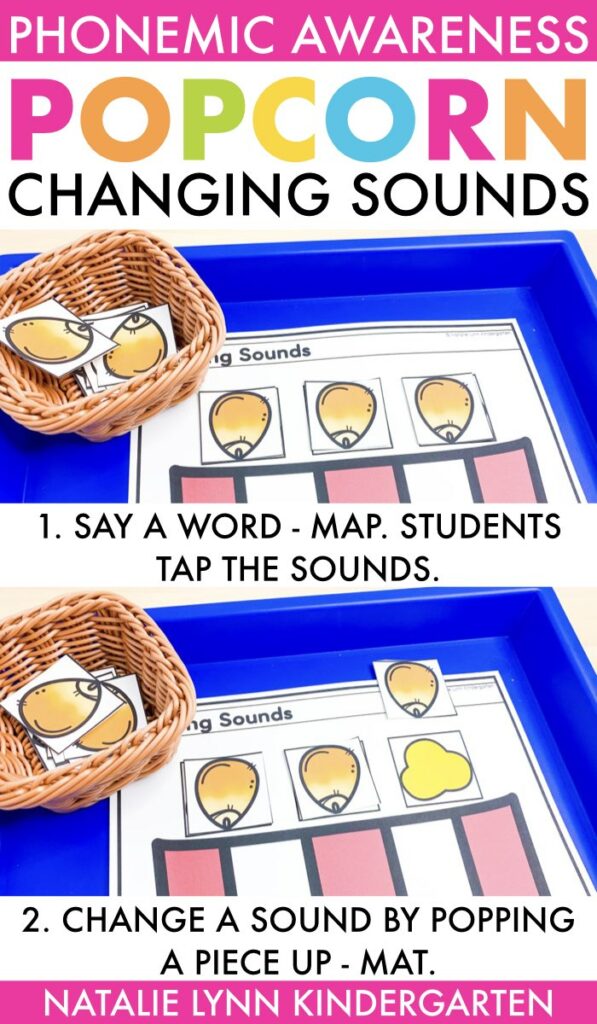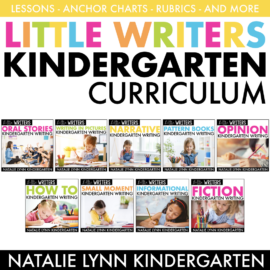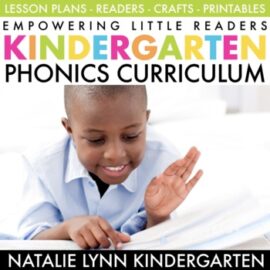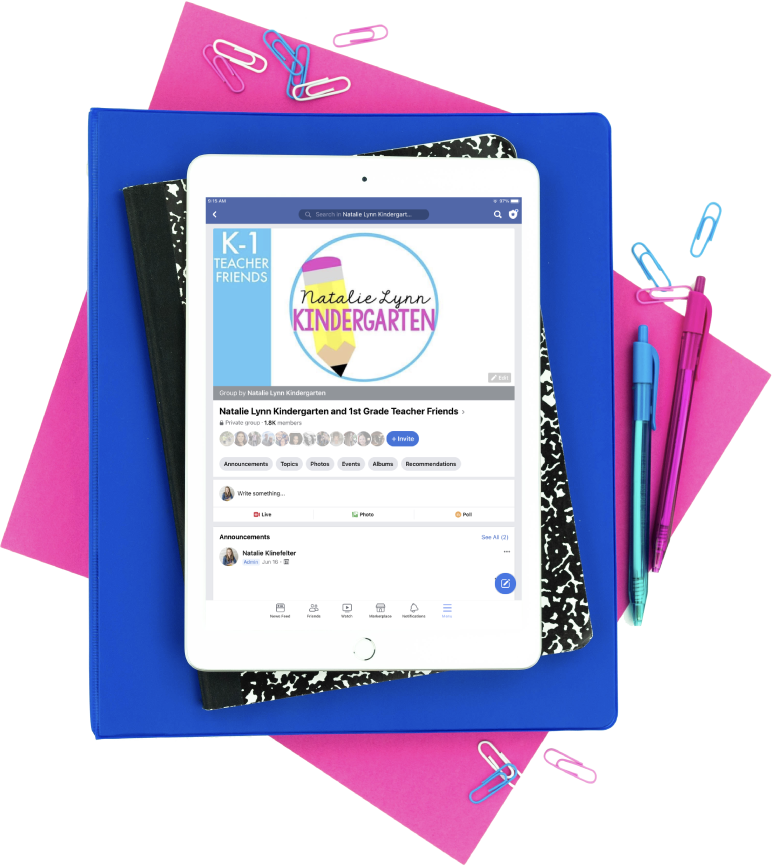
In This Post: Read about a hands on way to teach manipulating and changing sounds in words. Then grab a free phonemic awareness activity for manipulating sounds.
We know that daily phonemic awareness practice is a structured literacy must have, but there are some skills that are just plain difficult to teach!
In my opinion, manipulating and changing sounds in words is the most difficult of difficult phonemic awareness skills.
Not only do students have to segment and hold sounds for one word in their head, but now they have to mentally swap a sound out and blend all those sounds back together. It’s a lot!
I previously wrote about a hands-on way to introduce phoneme substitution.
In this post, you can grab a similar student phonemic awareness activity for manipulating sounds to add to your toolbox.
What is Phoneme Manipulation?
Phoneme manipulation is the act of inserting and deleting sounds in words.
For example, I say the word “cat” and then ask students to change the first sound to /m/.
Students who are able to manipulate sounds will be able to tell me that the new word is “mat”.
To be able to manipulate and change sounds successfully, students must first have a strong background in other phonemic awareness skills like:
- Isolating and identifying sounds
- Segmenting words
- Blending words
Phoneme substitution should be one of the last phonemic awareness skills taught. If students are not proficient in other skills like identifying sounds, segmenting, and blending, they will struggle with this skill too.
Popping Sounds Phonemic Awareness Activity
This phonemic awareness activity for manipulating sounds is perfect for small groups. It gives students a tangible manipulative when they’re first learning to substitute sounds in words.
For this activity, each student will need a Popping Sounds mat and popcorn kernels.
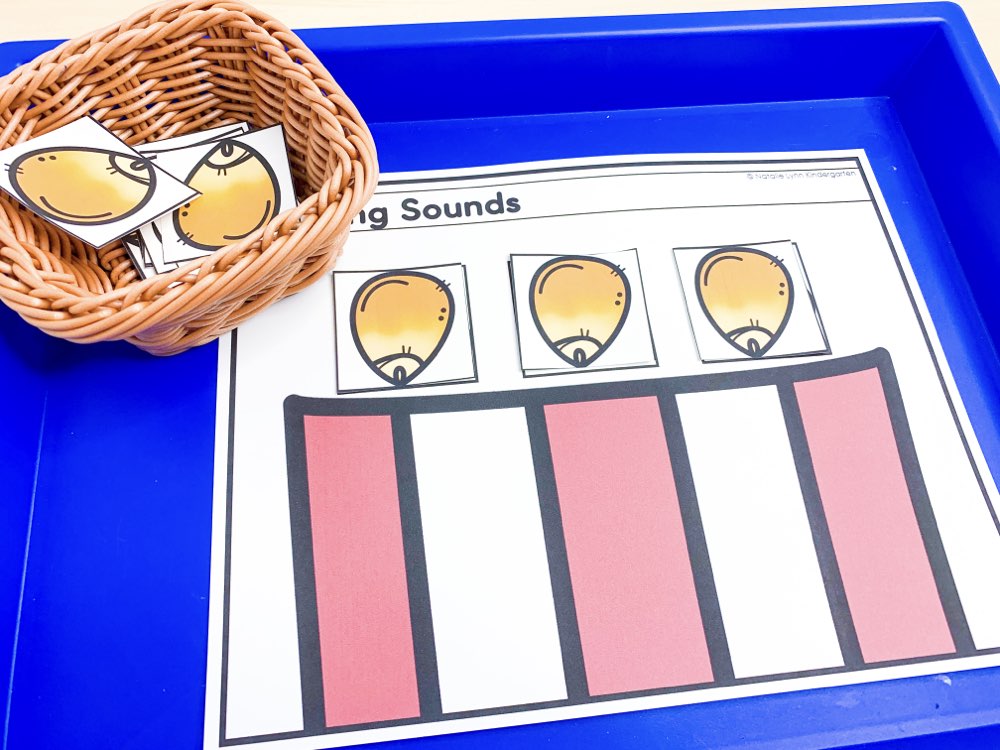
Step One:
Students will place a kernel on top of each square.
Then, you will tell students a word to say and segment. “Say the sounds in the word ‘map’”.
Students will tap the popcorn kernels as they say each sound. “Map. M-a-p”.
Step two:
You will then ask students to manipulate the word and substitute a phoneme.
“Change the first sound in this word to /c/“.
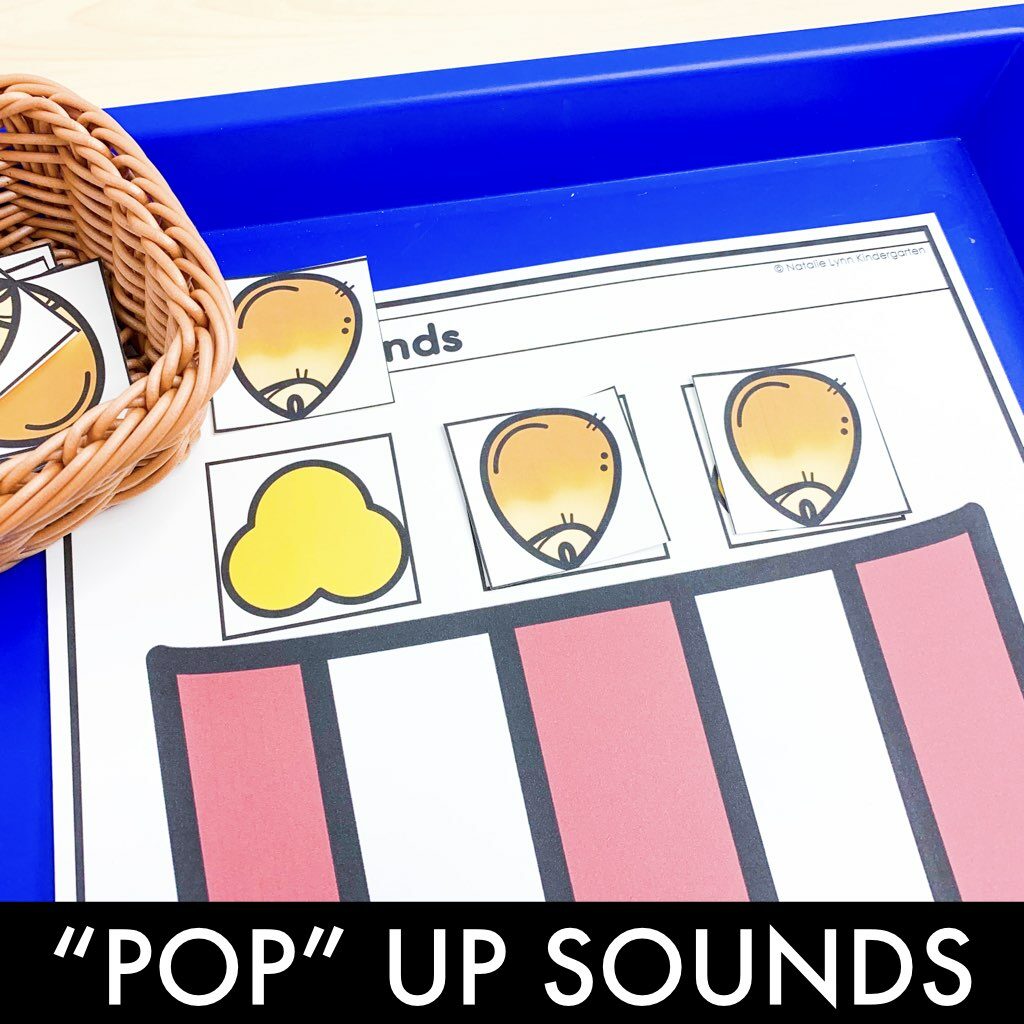
Students will physically “pop up” the sound that they are changing. In this case, they will pop up the first piece.
Step three:
Then, they will tap each spot as they say the new sounds and then blend the new word back together.
“c – a – p. Cap.”
Seeing the popcorn piece underneath the popped kernel gives students a visual reminder that the sound in that spot has changed.
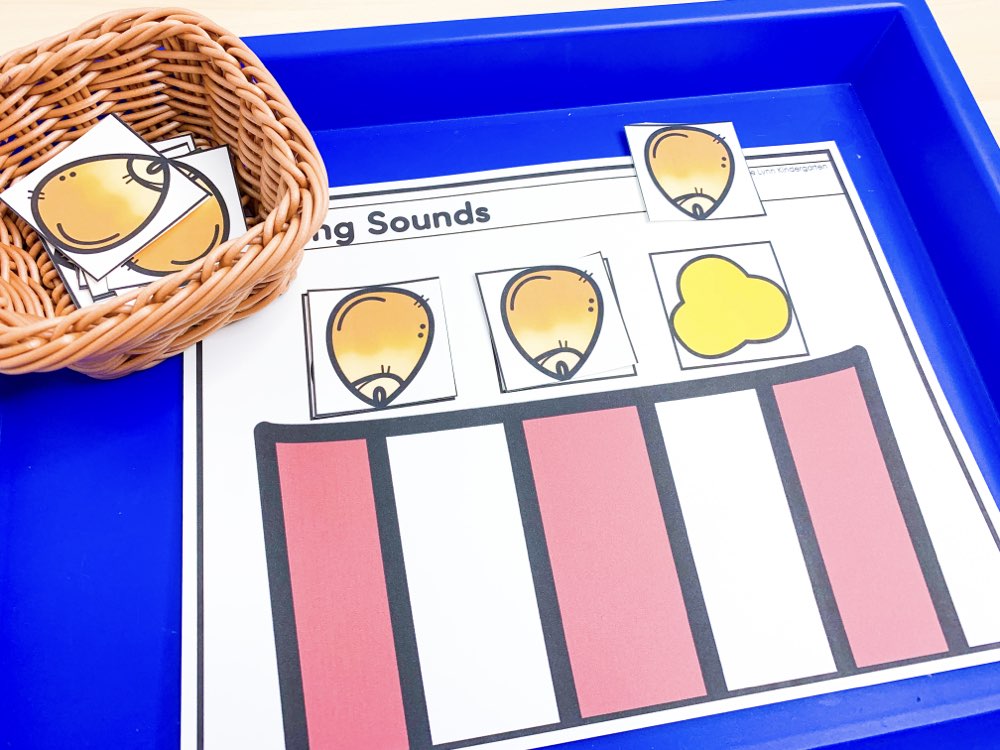
You can use this phonemic awareness activity for manipulating sounds to change the beginning, middle, or ending sounds.
If you are just beginning phoneme substitution, I suggest going in this order:
- Beginning sounds substitution
- Ending sounds substitution
- Middle sound substitution
Why? Changing the beginning sound is the easiest for students to begin with. This is a skill we often teach with word families. Students who understand rhymes can make the connection to manipulating the beginning sound in words.
This looks like: cat, bat, hat, mat, sat
Next, students begin to hear ending sounds. Once your students are able to change the beginning sounds, move into changing ending sounds.
This looks like: map, mat, mad, man
Then, medial vowel sounds. Vowels are difficult for students to distinguish in general, so you will want to make sure that your students know those sounds before manipulating them.
This can look like: cop, cap, cup
Last, mix the sounds up!
Word chains are a great example of this. Each time students change a sound they can change a different spot in the word.
For example: mat, map, cap, cop, pop, pot, pit
Bringing It To Paper
There is some debate as to whether or not you should include writing in your phonemic awareness instruction at all.
However, phonemic awareness is meant to strengthen students phonics skills for reading and writing. It makes sense then to take what you’ve practiced orally and bring it to paper.
For this phonemic awareness worksheet for manipulating sounds, we use two sound boxes.
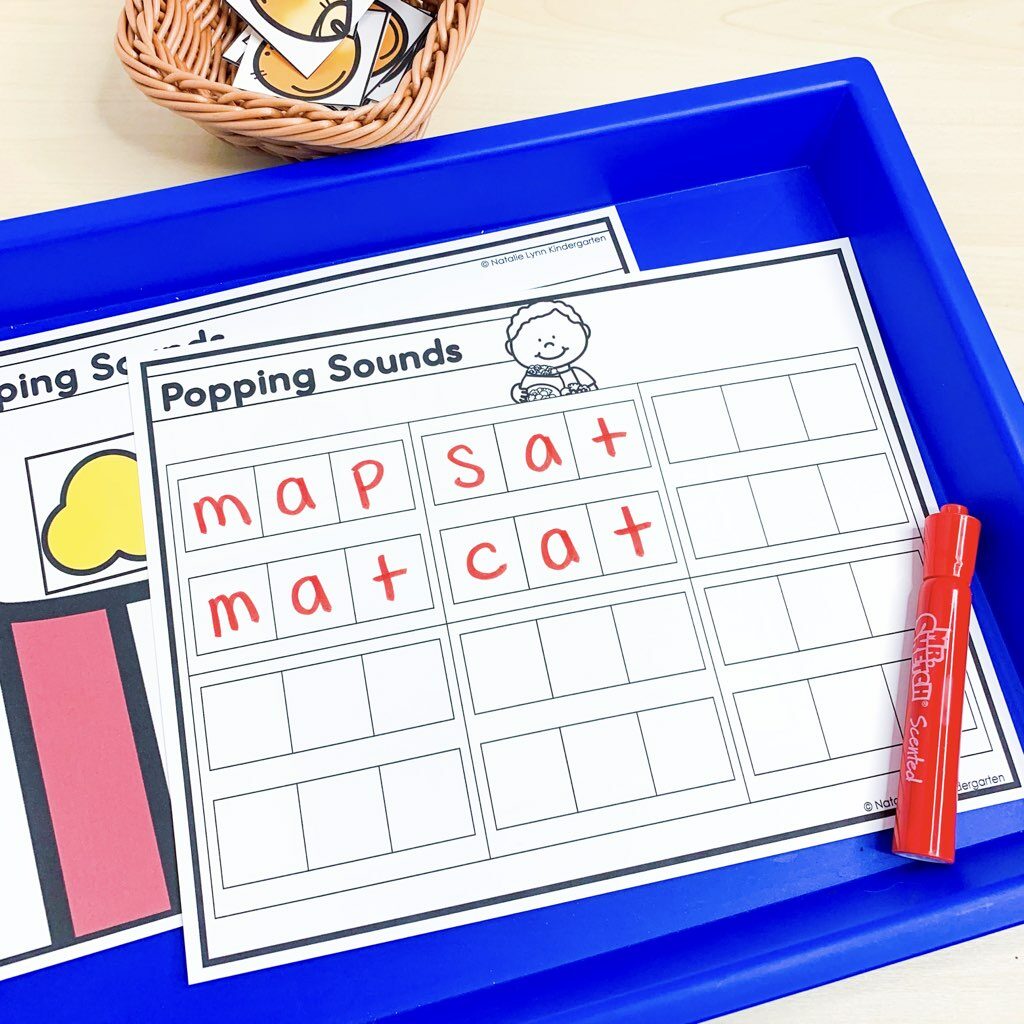
I will tell students a word to stretch and write in the first sound box.
Then, I will tell them what sound to change and they will write it in the second sound box.
This is a phonemic awareness activity you will only want to add in when your students have some practice with phoneme substitution.
You can even combine the two activities and have students pop up the sounds on the Popping Sounds mat before writing them on their paper.
Grab The Free Phonemic Awareness Activity!
If you’re ready to use this phonemic awareness activity with your students, you can grab it here:
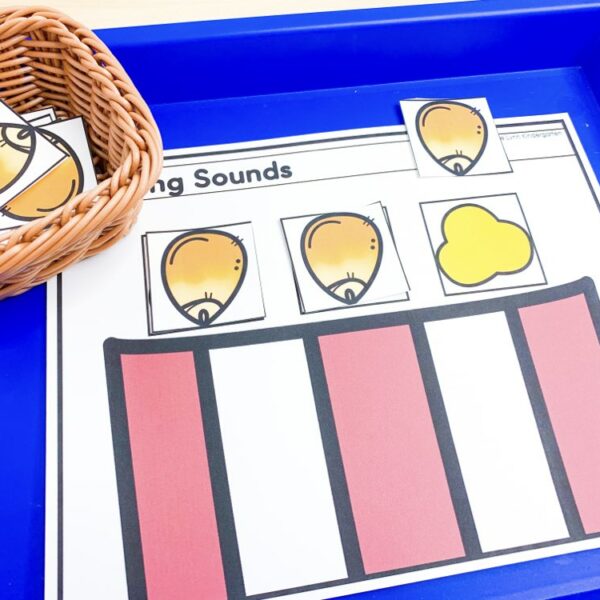
Do you love free stuff?
Popping Sounds Phonemic Awareness Activity
Manipulating sounds in words is a difficult skill to learn! This phonemic awareness activity makes it hands on.
If your want to make sure you remember this phonemic awareness activity for manipulating sounds later, pin this image:
